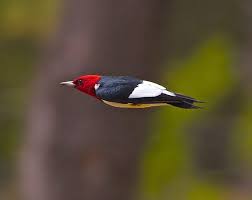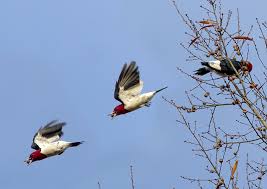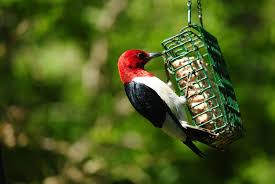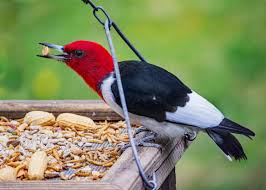by DJ Featherton

The Red-Headed Woodpecker is one of the most notable birds in North America. There’s no other bird, or woodpecker, like him. His flashy black and white is immediately identifiable on a tree, at the feeder, and even in flight. Add his beautiful crimson-red head to his sharp black and white and it’s obvious why he’s such a favorite bird to see. Some say the Red-Headed Woodpecker looks formal in his tuxedo as he requires a large and more private dining space at a platform feeder. It’s unfortunate, like many other birds, his numbers are in steep decline. This is why the Red-Headed Woodpecker needs help.
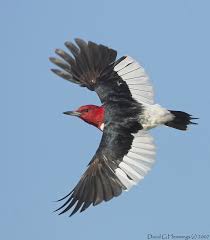
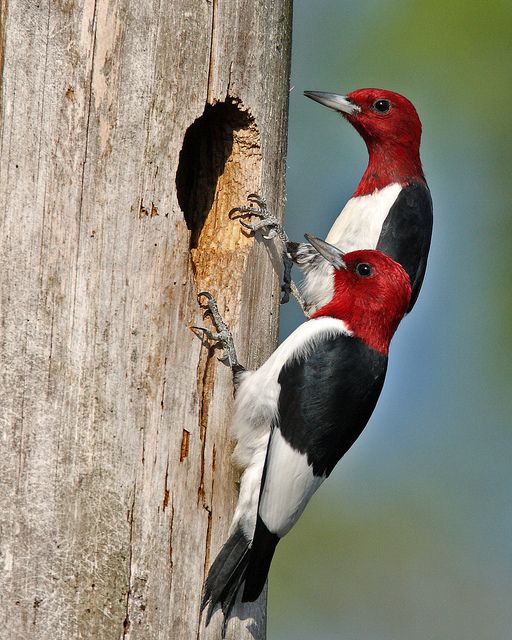
The Red-Headed Woodpecker’s territory runs from the Rocky Mountains to the east coast, and from southern Canada through the Gulf states. Back in the 1800s, Audubon took note of their beauty and abundance. There were many. As of recently, however, the Red-headed Woodpecker’s numbers have dropped to the point of being put on the “uncommon” list. That is unfortunate. An analysis of surveys taken shows a probable population decline of over 60% between 1970 and 2014. Why? There is some uncertainty.

Climate change is a factor in the Red-Headed Woodpecker’s decline. Urbanization and the logging industry are major factors as well. Yet, this woodpecker’s feeding menu is more diversified than any other woodpeckers’. He is omnivorous. His large menu includes insects, spiders and earthworms, nuts and seeds, berries and fruit, bird eggs, and even fledglings and mice. The Red-Headed Woodpecker doesn’t drill into trees to find insects as much as other woodpeckers. In fact, their drilling has to do with nesting, and making storage holes where they hide and cover food for later. Because the Red-Headed Woodpecker is so adaptable in so many locations, their dramatic decline remains a bit of a mystery. Maybe we backyard birders can help to make a difference.


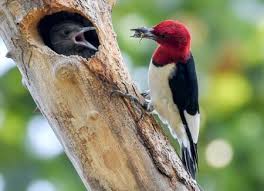
There are about 50 million birdwatchers in the U.S. If a percentage of these backyard birders catered to the Red-Headed Woodpecker, they would become a resident. Putting out plenty of suet with black-oil sunflower-seeds on a large platform feeder and rubbing suet on nearby trees will attract these woodpeckers.
But, even more, providing nesting boxes may be the best help for the Red-Headed Woodpecker. These can be simply made and don’t have to be decorative. Here are the dimensions:
- Floor: 6″ x 8″
- DIstance from floor to ceiling: 14″
- Entrance hole diameter: 2″
- Distance from floor to top of entrance hole: 11″
- Ventilation opening should be placed on the floor and under the roof
- Place nesting box at least 8′ from the ground
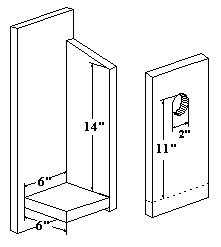
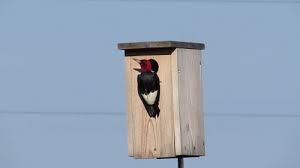
The woodpecker may need time to find this new home, so more than one box is best. Placing these boxes where there is sun will also get their attention. Don’t be surprised if other woodpeckers feel invited, but you’ll have Red-Headed Woodpecker success in time.
Large platform feeders with suet and seed and a couple of woodpecker boxes put out by many thousands of backyard birders would make a positive impact on their decreasing numbers. These are very special and beautiful birds. Let’s not lose them. The Red-Headed Woodpeckers need our help!

